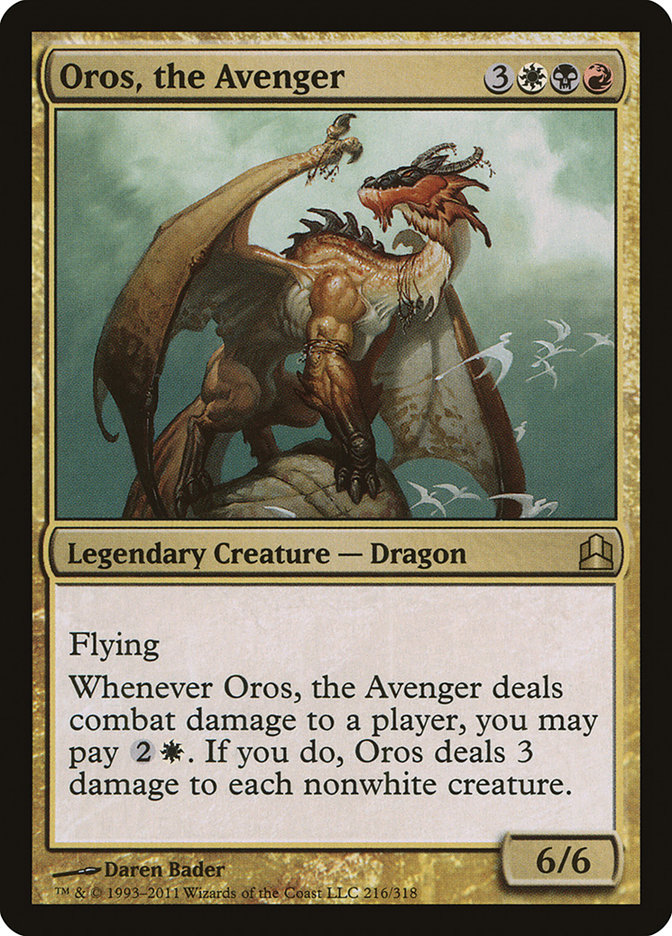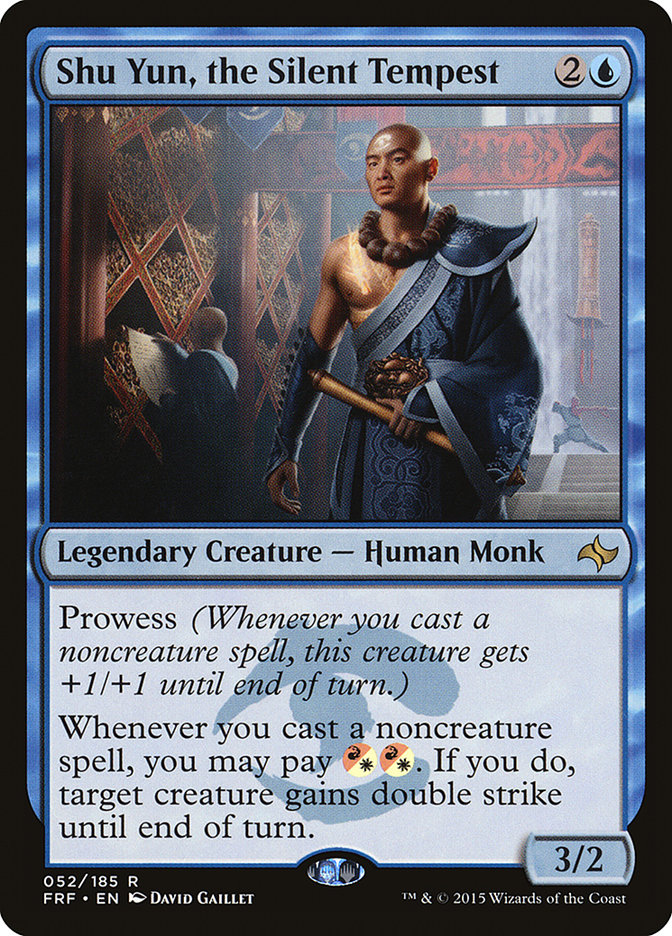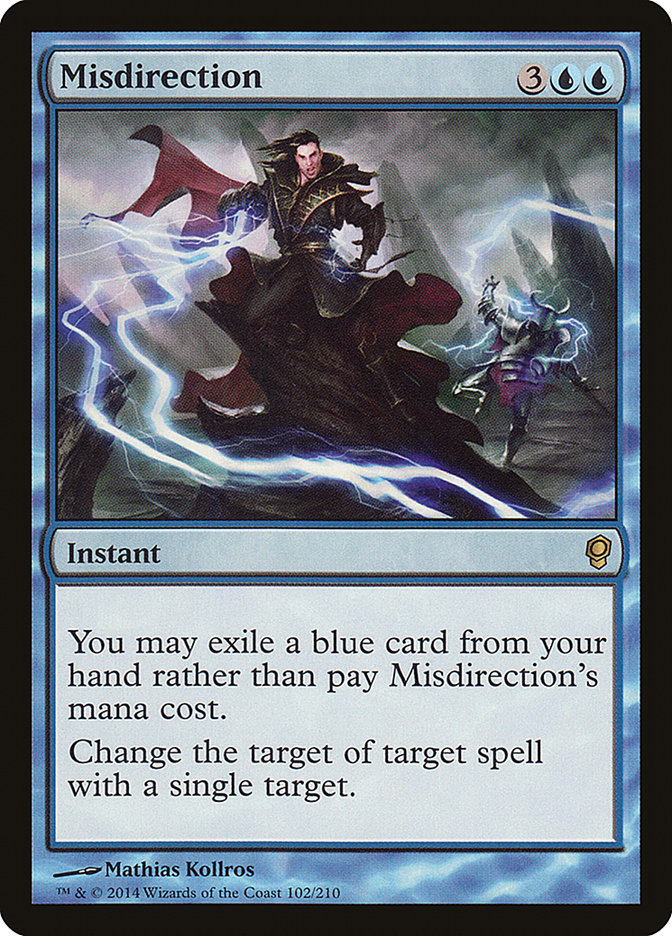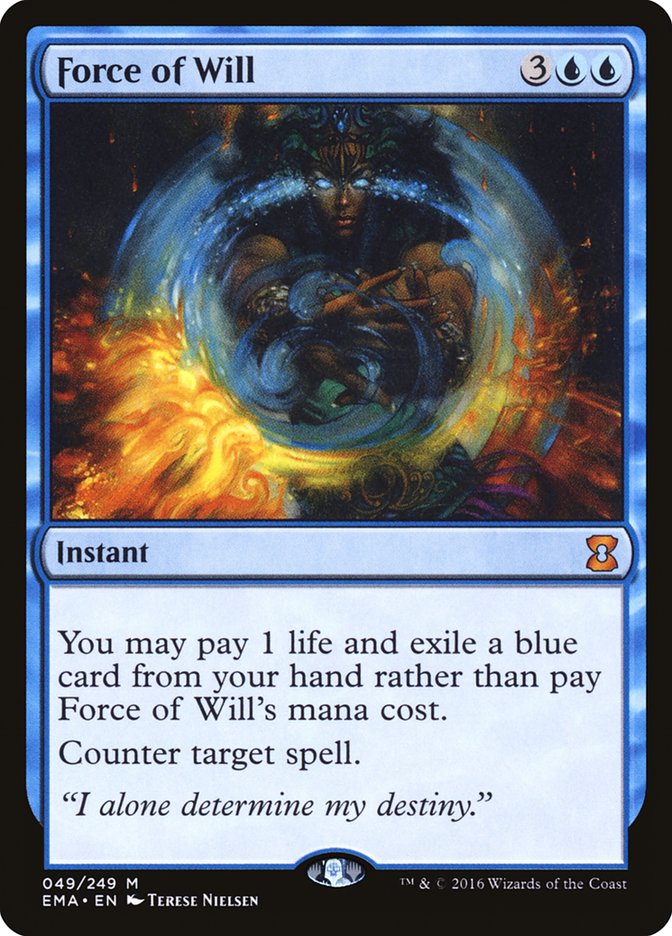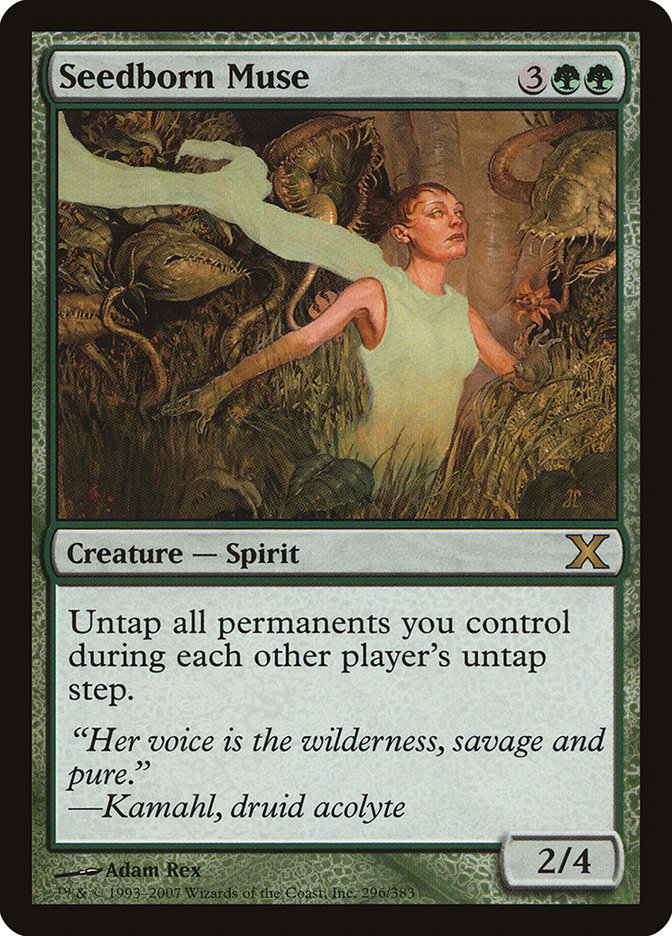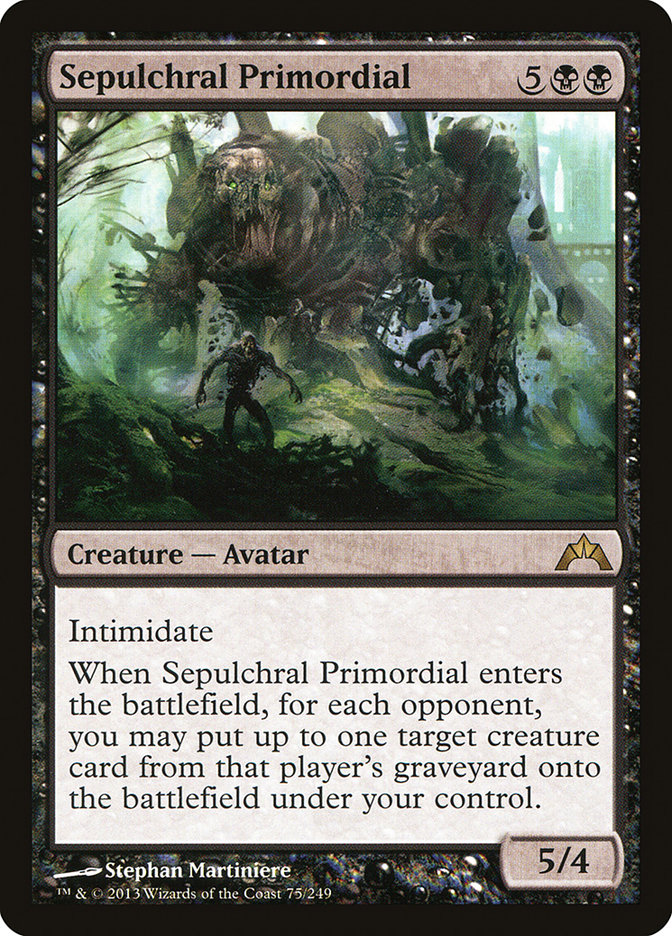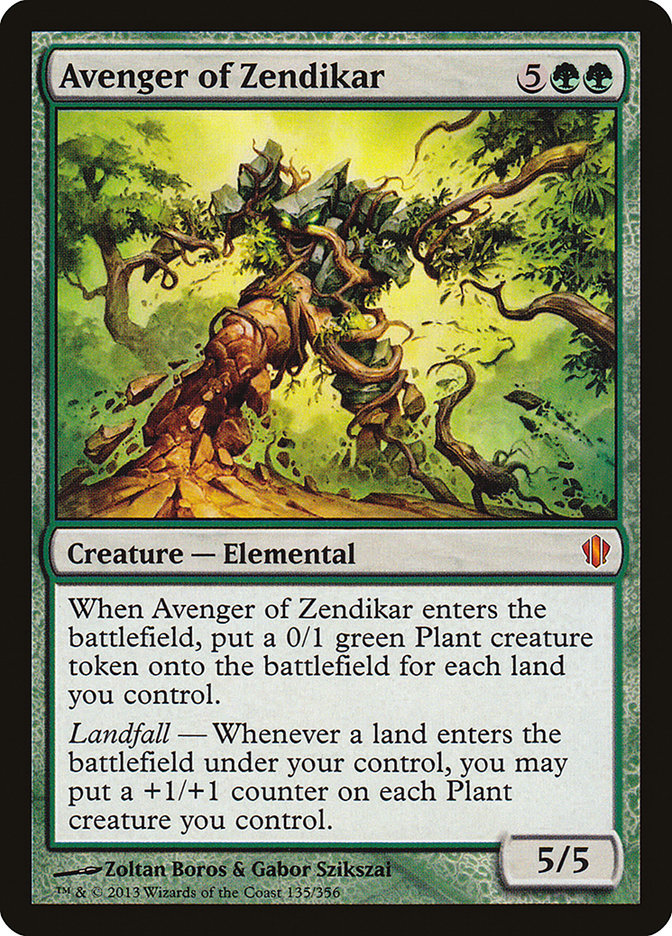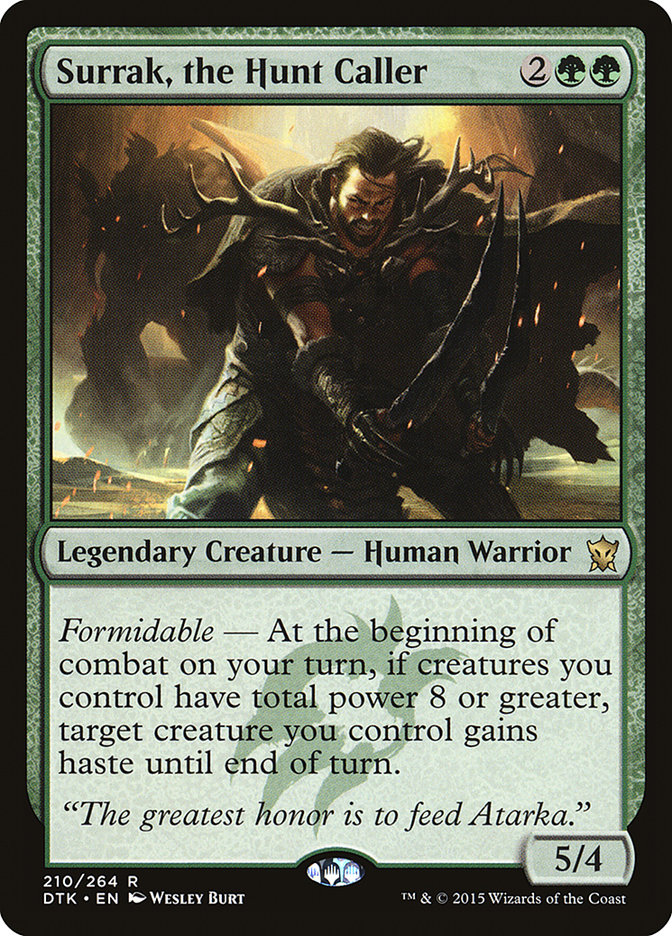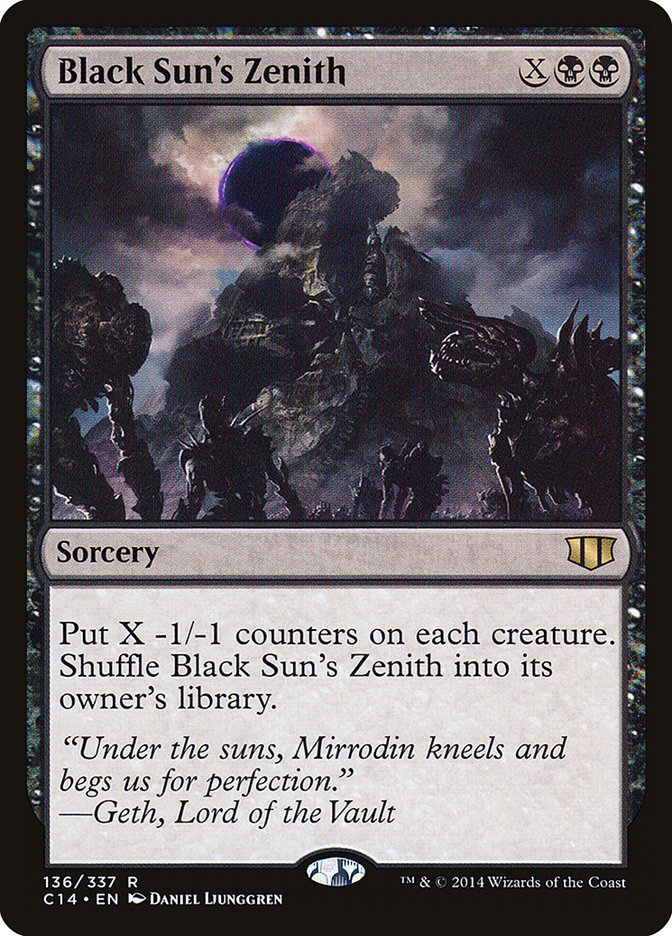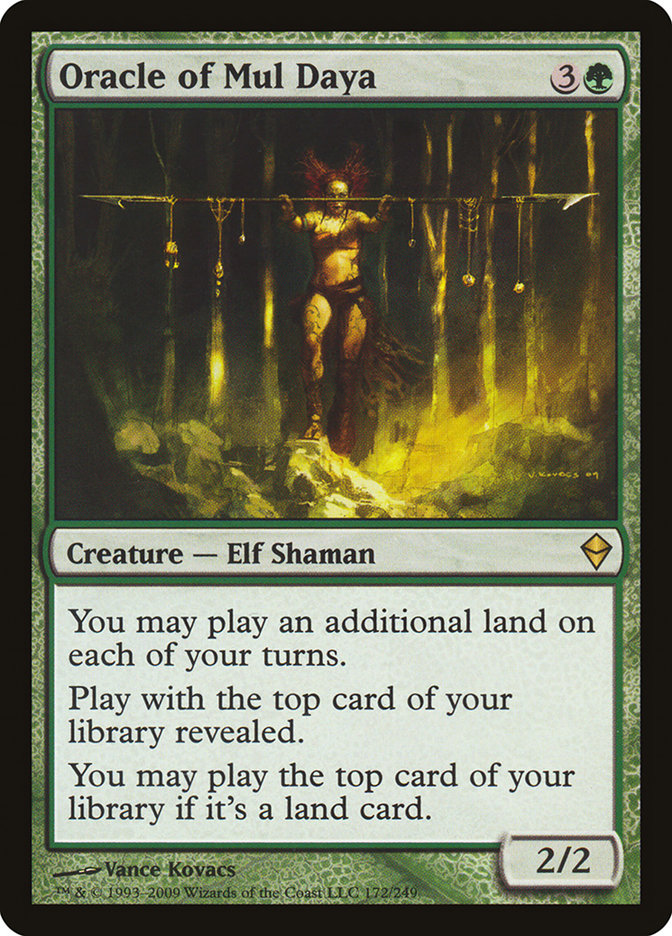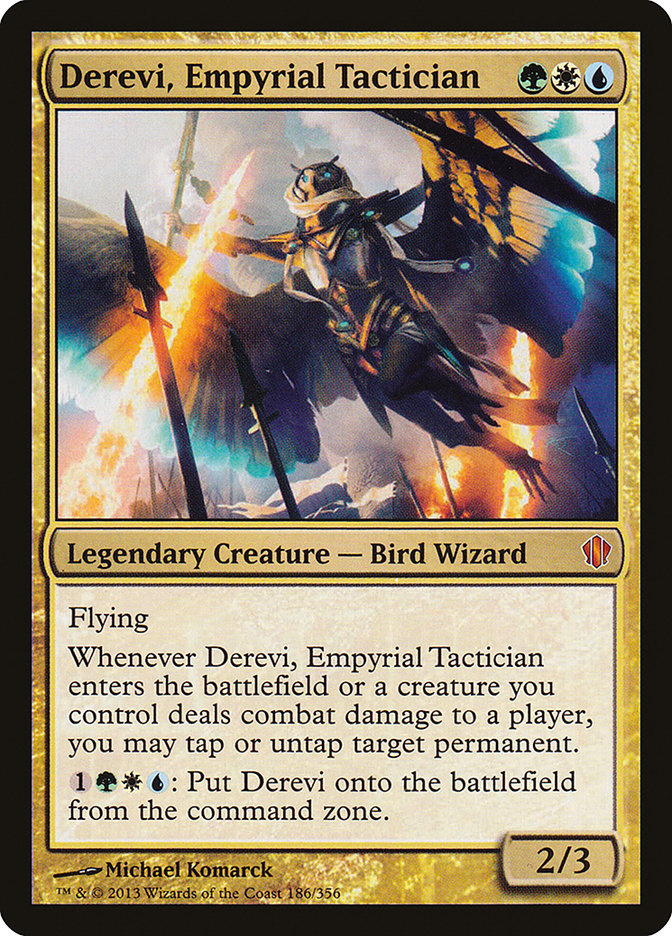Threat assessment win games. Article done. You’re welcome. I’m awesome.
Threat assessment is the single most important school to winning a game of Commander. This skill is also the most important skill for any multiplayer game. Magic with regular 60-card decks and multiple opponents, Conspiracy, Conspiracy: Take the Crown, and board games like Risk or Small World…all share a similarity of threat assessment winning games.
Threat assessment has many components. Today I will discuss knowing your strengths, knowing your deck, and determining targets. I’ll be using my Damia, Sage of Stone deck to showcase how I use threat assessment in a typical game. The examples may not match your play, but the theory is the important takeaway.
Know Yourself
This may sound like some New Age weirdness, but trust me. You need to know yourself to do well. Tom Ross is amazing with decks that threaten to completely blow out an opponent like U/G Infect or W/U Heroic. His opponents prepare for the blowout. Instead of going straight for that, he chips away and later catches them off-guard when the pressure is on. Patrick Sullivan is probably the best red mage in the world. Both of them know what they are doing with a playstyle they have mastered.
Strengths
You need to do the same thing. Know what your strengths are. You don’t need to go as far as playing a single deck archetype, but you must know how you play. What decks are you best with? What strategies do you excel with? When do you feel most comfortable in a game? What do you like doing best in Commander? What are your strongest Magic skills? You should be able to answer these questions.
For example, I prefer a deck with a control element or lots of little moving parts to give me incremental value. Oros, the Avenger and Shu Yun, the Silent Tempest have moving parts and control elements, while Damia, Sage of Stone is a control deck first and foremost. These are where I am best for multiplayer games. When I play Hazezon Tamar, I need to make a more conscious effort to play Haymakers: the Deckening.
My strengths are in a few broad categories: strategy, deck construction, knowing when someone is weak, and tracking information in multiplayer games. During games, I can use a variety of strategies, and more importantly, I know when to transition between strategies. Damia, Sage of Stone may lead a control deck, but sometimes you need to speed up the clock and put pressure on an opponent or two. I am usually good at identifying when this shift is needed and when my opponents are planning a shift in their strategy.
I construct a variety of decks in a variety of power levels. My decks are usually well built to accomplish the goal of the deck. This ensures that I enjoy the game and that I can focus on playing, not on making my deck get into the game. I know that my decks run answers to the problems I expect in my games. Given my preference for card drawing engines, I can expect to see those answers in a pretty timely manner too.
I am also good at knowing when someone is weak. I mean this beyond the obvious ability to identify a bad battlefield state, like when an opponent is out of gas. Even the player with the best battlefield can draw nothing relevant for multiple turns. Sometimes attacking the player who looks like they have all the answers is the best move because they don’t have an answer.
A critical poker skill is knowing what is happening with every player. Magic teaches the skill and good multiplayer games demand it. I’ve been playing multiplayer games almost exclusively since about 2007, almost a full decade. I have loads of experience at tracking a large game state. This gives me an advantage by knowing what is happening and who is currently the most likely to win the game. This lets me make my plays accordingly and I do everything I can to anticipate my opponents’ actions against me.
Weaknesses
Knowing what you are bad at is often as important as, or more important than, knowing your strengths. Be critical about your weaknesses; hiding from them won’t make you any better. After a game, or even after a turn, ask another player what they would have done. Remember, weakness are something we work at, but these are games with several opponents. Even perfect play (if such a thing exists) can still be beaten by a sudden game of Archenemy.
The first step to solving a problem is identifying one. Identify where you are weak, and be honest with yourself. After identifying a weakness, you want to develop a plan to combat it. This can be a reminder or a full twelve-step program. Do what works best for you.
My weaknesses break down into two categories: impatience and overconfidence. I frequently get impatient during a game and try to rush a win. I should be working to ensure that my lead remains rather than moving in for a kill. This often backfires when someone else saves an opponent and I am left too spread-out.
I am also overconfident about my assumptions of what will happen. I am usually good at predicting the game and I have been The Threat in my playgroups through high school, college, grad school, and now. I tend to rely on the fact that I win more than most others in the group. But sometimes cards always catch me off-guard when they shouldn’t, like Fog or a random piece of removal. Something falls through the cracks, I assume I know best, and I get wrecked for it.
How do I address these? Part of the deck purge helped address the impatience side. I am willing to let a game go longer if I am having fun. Removing the decks I didn’t enjoy is helping me not rush a finish. I also try to focus on playing well all the time. If I want to have tight play, then I need to play tightly all the time to get it. Instead of gunning for a kill, I want to make sure I can win the game rather than just take out one opponent and die.
As for the overconfidence, this is something I have to keep reminding myself to think about. Just because I think a card is silly does not mean that my opponents will think so too. If Suzie loves aggro decks, she will value cards differently from how I do, since I prefer a more controlling deck. I will mentally write a card off and then lose to it a week or so later. It’s a little embarrassing.
Know Your Deck
Knowing yourself is a continuous thing which changes slowly as you learn and adapt. Knowing your deck is something that can change game by game or every time you make a change. This starts with knowing what your deck can do and what it cannot do. You also need to know how the deck transitions from early- to mid-game and from mid-game to late-game.
Creatures (22)
- 1 Sakura-Tribe Elder
- 1 Solemn Simulacrum
- 1 Withered Wretch
- 1 Seedborn Muse
- 1 Eternal Witness
- 1 Mystic Snake
- 1 Coiling Oracle
- 1 Draining Whelk
- 1 Woodfall Primus
- 1 Oracle of Mul Daya
- 1 Avenger of Zendikar
- 1 Massacre Wurm
- 1 Scavenging Ooze
- 1 The Mimeoplasm
- 1 Mindshrieker
- 1 Deadeye Navigator
- 1 Sepulchral Primordial
- 1 Progenitor Mimic
- 1 Horizon Chimera
- 1 Burnished Hart
- 1 Reclamation Sage
- 1 Void Winnower
Planeswalkers (2)
Lands (38)
- 1 Strip Mine
- 7 Forest
- 1 Reflecting Pool
- 3 Swamp
- 8 Island
- 1 Bayou
- 1 Polluted Delta
- 1 Temple of the False God
- 1 Overgrown Tomb
- 1 Watery Grave
- 1 Breeding Pool
- 1 Ghost Quarter
- 1 Terramorphic Expanse
- 1 Sunken Ruins
- 1 Twilight Mire
- 1 Misty Rainforest
- 1 Verdant Catacombs
- 1 Bojuka Bog
- 1 Evolving Wilds
- 1 Mystifying Maze
- 1 Command Tower
- 1 Alchemist's Refuge
- 1 Opulent Palace
Spells (37)
- 1 Hinder
- 1 Mystical Tutor
- 1 Sol Ring
- 1 Demonic Tutor
- 1 Darksteel Ingot
- 1 Kodama's Reach
- 1 Insidious Dreams
- 1 Desertion
- 1 Oblivion Stone
- 1 Loxodon Warhammer
- 1 Bribery
- 1 Reap and Sow
- 1 Explosive Vegetation
- 1 Blatant Thievery
- 1 Snuff Out
- 1 Undermine
- 1 Farseek
- 1 Krosan Grip
- 1 Sudden Spoiling
- 1 Pact of Negation
- 1 Slaughter Pact
- 1 Mana Reflection
- 1 Cultivate
- 1 Leyline of Anticipation
- 1 Black Sun's Zenith
- 1 Beast Within
- 1 Spell Crumple
- 1 Abrupt Decay
- 1 Cyclonic Rift
- 1 Mystic Genesis
- 1 Plasm Capture
- 1 Swan Song
- 1 Toxic Deluge
- 1 Tempt with Discovery
- 1 Silence the Believers
- 1 In Garruk's Wake
- 1 Commander's Sphere

The deck is built to mechanically abuse Damia, Sage of Stone. Every upkeep I want to draw three or more cards. After getting Damia out, it is all about controlling the game with counters*, answers, and battlefield control. I don’t need to dictate every aspect of the game and turn it into “Mother, May I?” Instead the goal is to control the game’s pace. Damia helps ensure that I can keep control of games because she will always get me a full grip of cards. When your commander is an excellent draw engine, you do not need to devote many cards to drawing. This gives me more slots in the deck for answers and threats.
* I don’t like Force of Will in three-color decks. I have it, but I don’t like my odds of having the blue spell to exile. I would love to add a Mana Drain, but that is a huge investment I’m not ready to make.
The deck does have a couple of drawbacks, mostly around mana. (A moment of silence for Prophet of Kruphix for this deck’s greed. Seedborn Muse lost her sister.) I need to spend the early turns ramping to get Damia out around the fourth or fifth turn, the earlier the better. The deck runs a hefty suite of ramp spells and a couple of mana rocks too; the best ones are Tempt with Discovery and Reap and Sow.
When someone offers you the choice for a Tempt with Discovery, you should never take it unless you can immediately win. In a four-player game this will routinely get two to four lands onto the battlefield untapped. This deck doesn’t run Cabal Coffers and Urborg, Tomb of Yawgmoth, but you don’t want your opponents to easily set up boatloads of mana. Even getting Command Tower, Reflecting Pool, Temple of the False God, and Bojuka Bog generates a lot of mana and deals with a problematic graveyard.
Reap and Sow isn’t quite as overtly powerful, but the land enters untapped and isn’t a basic, and you have the choice of destroying a problem land of an opponent. Rather than a four-mana spell with a two-mana kicker, I like to imagine I paid three in green to Stone Rain and three more to put any land onto the battlefield untapped. This does let me dominate the late-game, but a fast deck will put Damia and decks built like this on the back foot and they’ll likely unable to recover.
Game Transitions
I’ll focus on the good-to-typical plays; the games where I just die on turn 5 are sad and no one learns a lesson aside from me about mulliganing better.
I mentioned game transitions earlier. When the deck gets its ramp online and can get an early seven-mana Commander, the deck almost immediately jumps to the mid-game. Even if Damia is alone, she is still a 4/4 and can attack in the early- and mid-game. Usually, I keep her back, but free damage on an opponent is something to take advantage of. With Damia out, I am reliably drawing cards. This keeps options open and the game moving. With seven mana and a full grip, I can land a threat or two and keep going. With every turn bringing me back to a full grip, I always have a threat ready.
Moving to the late-game is usually about attrition for this deck. Step one is get Damia online. Getting and keeping her on the battlefield is almost always the top priority. Actually, just make it always. The deck relies on her card-drawing effect to keep up with the table.
The next step is a threat. Keeping something in reserve is important, as opponents tend to go after a big threat, and this deck is a big threat. Overcommitting to the battlefield is an easy way to get blown out when multiple opponents go after you. Counterspells can’t stop everything, and you do run out of mana. One threat like Sepulchral Primordial flips the game in your favor, and Void Winnower makes your counters twice as effective. Avenger of Zendikar is bit of a good-stuff inclusion, but it wins games and the deck wants easy closers.
Late-game, all of the threats improve. There are more lands, more targets, and more options. This is when Deadeye Navigator gets bonkers. I do dislike this card, and I am not a fan of including it here, but my LGS is powering up and I wanted this deck to still be able to keep up with the big kids’ tables.
At any point this card generates value, but late-game the Navigator can effectively make the deck an order of magnitude more effective than the table. Locking the game with Mystic Snake or Draining Whelk is boring and should be avoided. (But I don’t avoid it all the time either, sometimes you just go for the win.) Now, blinking Avenger of Zendikar a couple of times during an opponent’s turn and then casting Explosive Vegetation or dropping a fetchland is pretty much game. Woodfall Primus answers everything noncreature while Massacre Wurm handles all the creature-based problems and is a win condition with its second effect. Deadeye Navigator makes the whole deck run like clockwork with the many enters-the-battlefield effects.
Targets
The first thing I want to discuss here is spot removal. Many, many players waste their spot removal by using it immediately after they draw it or as soon as a viable target presents itself. Naturalize effects are a great example. If you draw a Naturalize and do not immediately know that you must target a specific card or lose the game, wait! This is true for creature removal and land destruction effects. Don’t do work for your opponents. If an opponent controls Surrak, the Hunt Caller and nothing else, leave the card alone. If an opponent has Surrak and casts an Eldrazi, you act then, not when there isn’t a good threat presenting itself.
The second part of attacks is identifying who to attack. This often breaks down into two categories, the opponent who is your biggest threat and whoever you are the biggest threat to. This is not static. I will repeat it. This is not static. These opponents shift throughout the game as things develop. The opponent with a million tokens could kick your butt, but a Black Sun’s Zenith for two or three suddenly puts them at square one. But if you have ways to remove all the -1/-1 counters from your creatures, then you may be the big threat to the caster of BSZ.
The person who is most likely to beat you should be the target of most of your attacks. They will destroy you if they are unopposed. Oppose them! But while doing this, you need to defend against the opponent who considers you the biggest threat. Be sure to acknowledge Archenemy scenarios too. If someone has a truly commanding lead, form the Avengers and go kick butt. Just make sure that, after you drop the enemy, you can handle the Hulk.
How does this work for Damia, Sage of Stone? Tokens are a problem, as are Grave Pact effects, and finally are the decks that dodge counters well and can get out early. Token strategies can swarm around my big threats or chump block them. I’ve been working to include some more answers for them. Massacre Wurm is fantastic for often killing or crippling the token player. But in a game the other day, I cast a Black Sun’s Zenith for one to cripple a Teysa, Orzhov Scion deck that had three Spirit tokens, Blood Artist, and Viscera Seer. That single set of -1/-1 counters put that deck down and didn’t do much to Damia and Oracle of Mul Daya.
Grave Pact effects a huge struggle for this deck, since they excel against a deck with only a couple threatening creatures. If they can slip a sacrifice outlet onto the battlefield, the whole game warps for me to remove that Grave Pact effect to keep Damia around to draw more cards. Against these decks, I never seem to have enough counters, so they are my prime target. Occasionally someone does something that draws my fire, but overwhelmingly I need this opponent gone to stand a chance of winning.
Decks like Derevi, Empyrial Tactician are another issue, Derevi particularly as the second effect is an activated ability, dodges the Commander tax, has an enters-the-battlefield trigger, and creates a combat damage trigger for the controller’s whole battlefield. Derevi will keep coming, like the Terminator. Any deck that has similar capacities to deal early damage and keep coming back. Goblins or tribal decks; Shu Yun, the Silent Tempest; and Anax and Cymede create similar problems.
Those decks present the greatest challenge, so I dedicate the most time to trying to keep them under control and take them out of the game. Sometimes this means passing on mana development for an early counterspell or removal spell. Other times it means pressing a risky attack to ensure that I can survive for two more turns. Damia doesn’t gain a lot of life, so those early turns are key to prevent a death from a thousand cuts.
Application
Take some time to assess yourself before your next Commander games. Then be critical about what your deck and your opponents’ decks can do. Attacking and targeting your biggest threat while protecting yourself from the person who considers you the biggest threat is a strong step towards better threat assessment. When in doubt, you can always attack the player who wins the most games. Taking down the alpha dog isn’t a bad thing, either.
What actions do you take to assess your threats? What is your weak point? Do you try to shore up those weaknesses or just fold to one strategy in attempts to beat everything else you see in your group? Did I just tell my playgroup to attack me more often?



